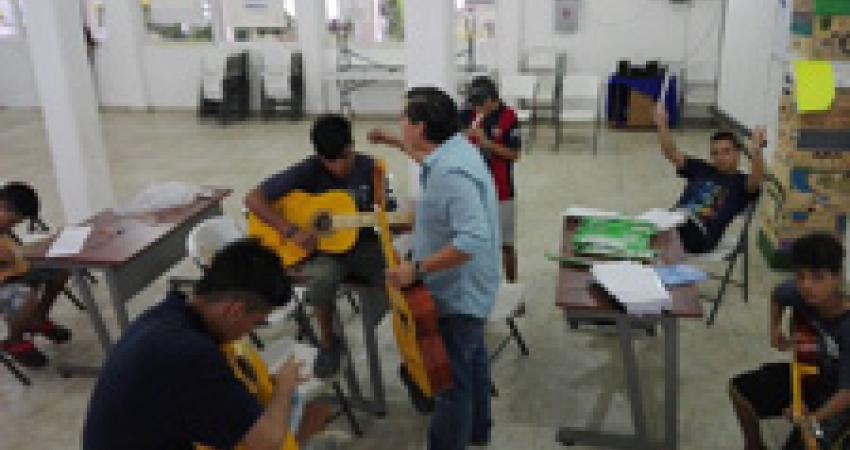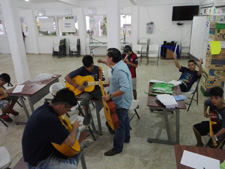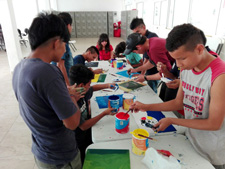Rebuilding the Confidence of Migrant Adolescents

Tapachula, Mexico. With the aim of animating the days of hundreds of migrant teenagers in the "Viva México" Temporary Shelter for Migrant Minors, IOM, through its Mesoamerican program, has set out to promote a recreational and training program that will bring back some joy and emotional relief. Every day, Central American adolescents who have migrated irregularly arrive at these facilities - located in Tapachula, southern border of Mexico. Their stay can be 24 hours or up to six months, depending on the case.

"All these young people come to our shelter with a very high emotional load. They are children who need attention. They are adolescents and are alone in another country and this makes them need more support, "says Giaydi Gutiérrez, coordinator of the Shelter". That's why we have promoted a program of recreational and playful activities that allow them to clear their minds, do different things while they are here", she adds.
Under this training program, young people are surprised by recreational activities ranging from football to French cooking classes; passing through CrossFit, dance classes (of course!), music, painting or serigraphy.
"We are striving to ensure that those who stay longer are trained even in some activities that can offer them an alternative work for their future. We have already delivered certificates to some as CrossFit instructors, for example and this is a very big motivation for them", Giaydi Gutiérrez says.

The official says that the children in transit are very motivated when they come and see the variety of recreational activities offered by the Shelter, as it offers them a fresh air on their way.
"We can make them feel better, on a psychological level they can better handle the situation and reduce the tension of the moment," he adds.
In 2016, the Viva Mexico Shelter received a total of 2,178 teenagers; more than double the amount it expected to receive in a year. This innovative program of recreational and educational activities began to be implemented in 2016 as a pilot, as a result of the collaboration of the IOM and the contribution of local professionals and artists who have succeeded in establishing a bridge with the sheltered migrant population.
Find more Mesoamerican Program stories in our Annual Report (Only Spanish).